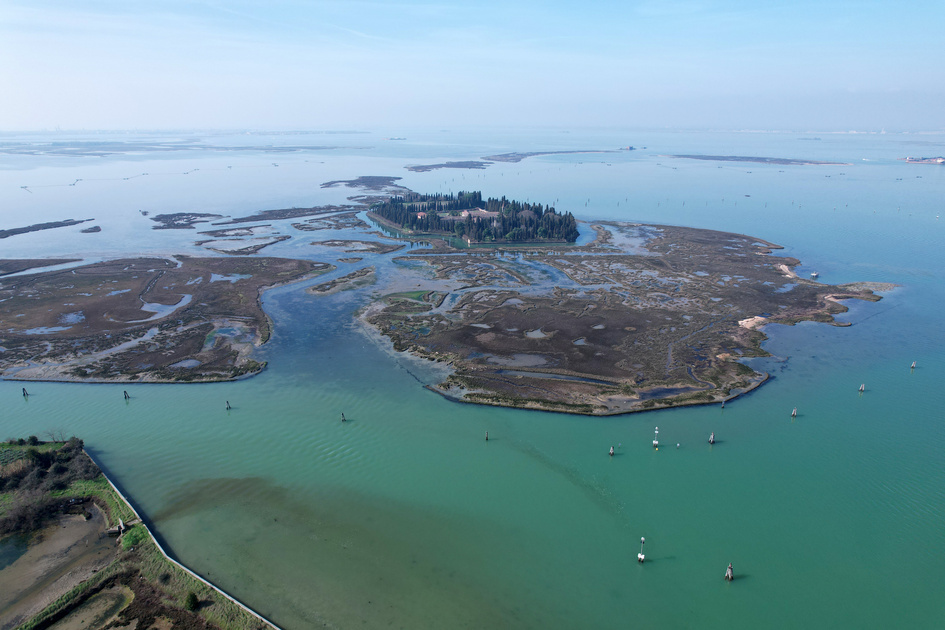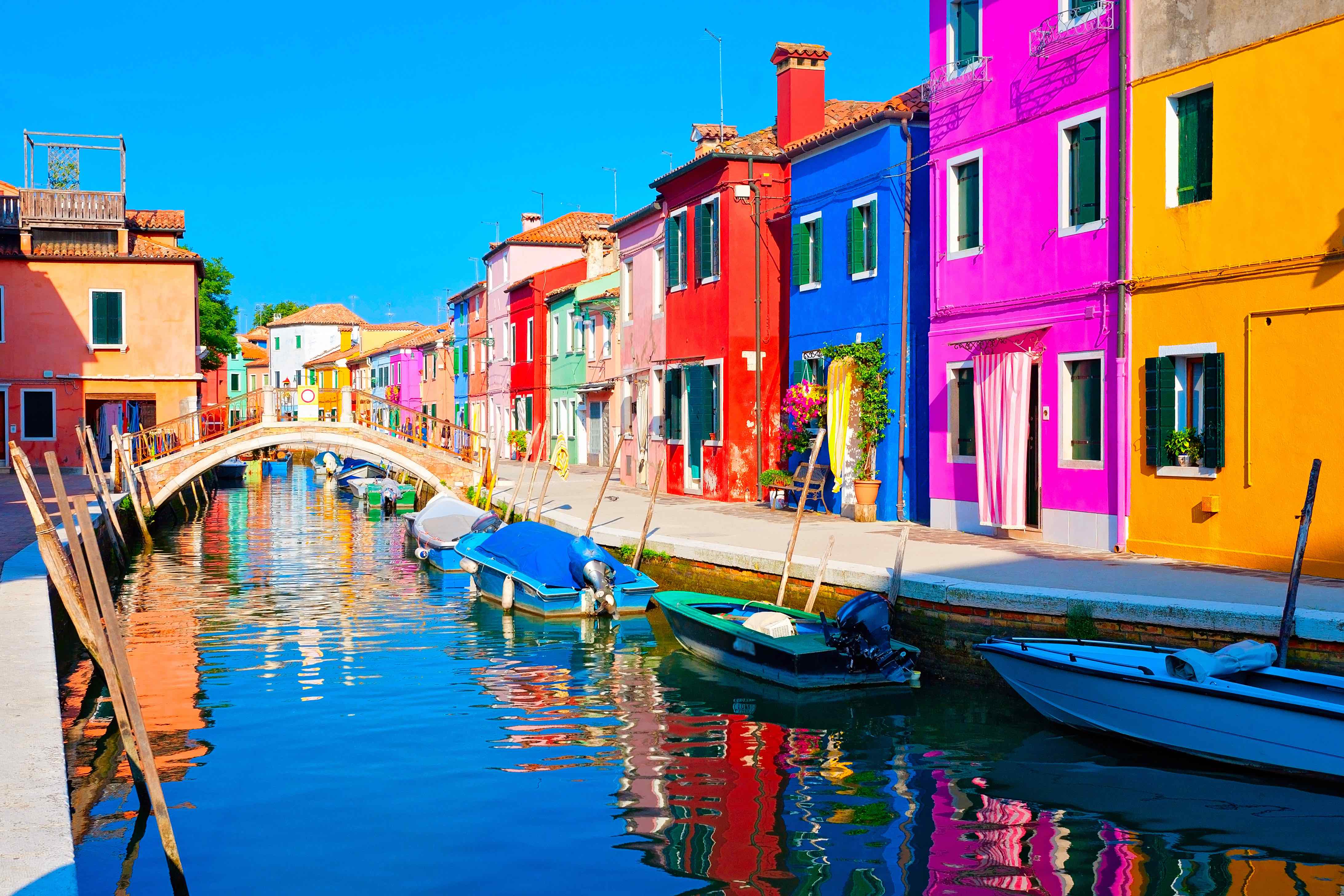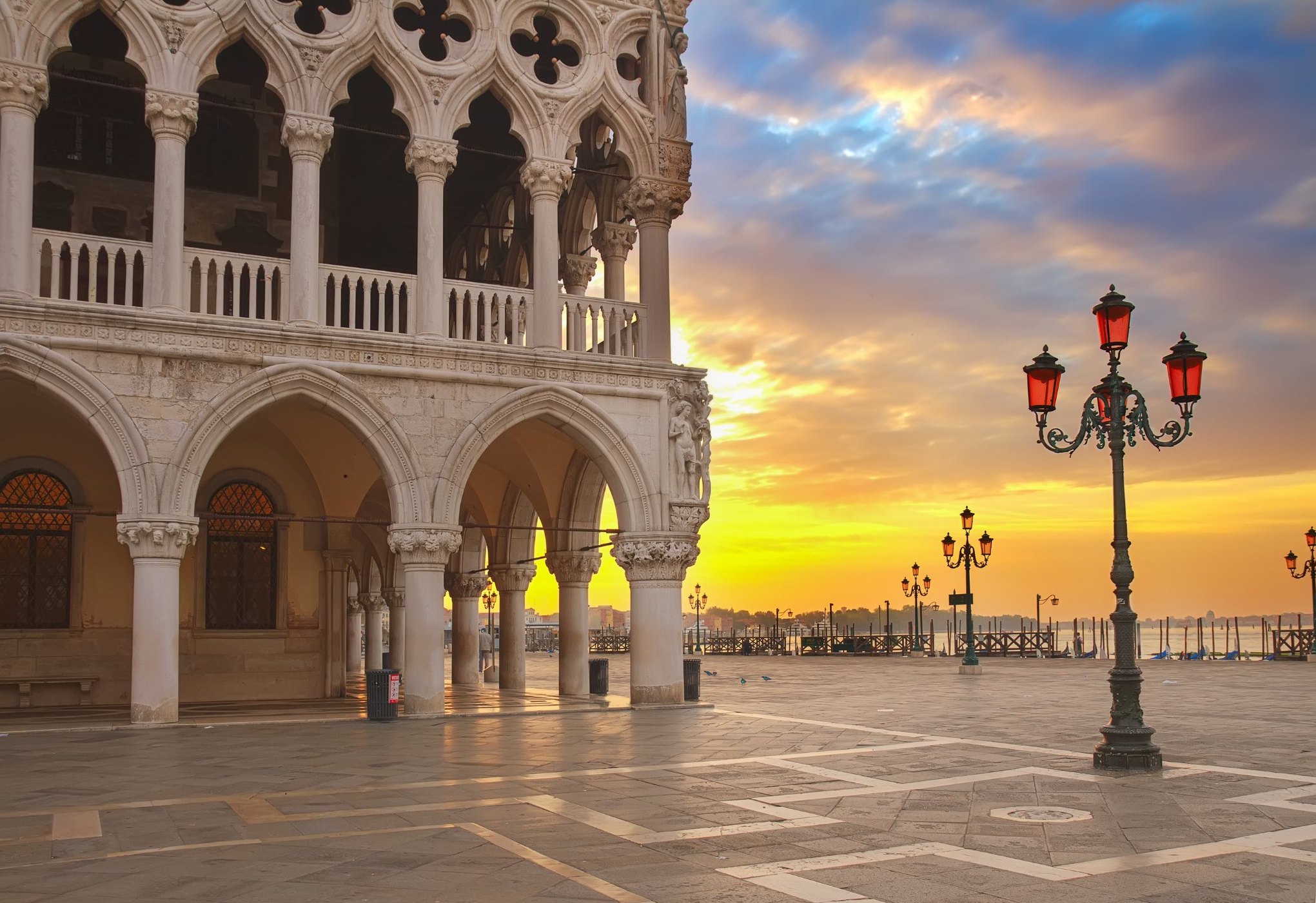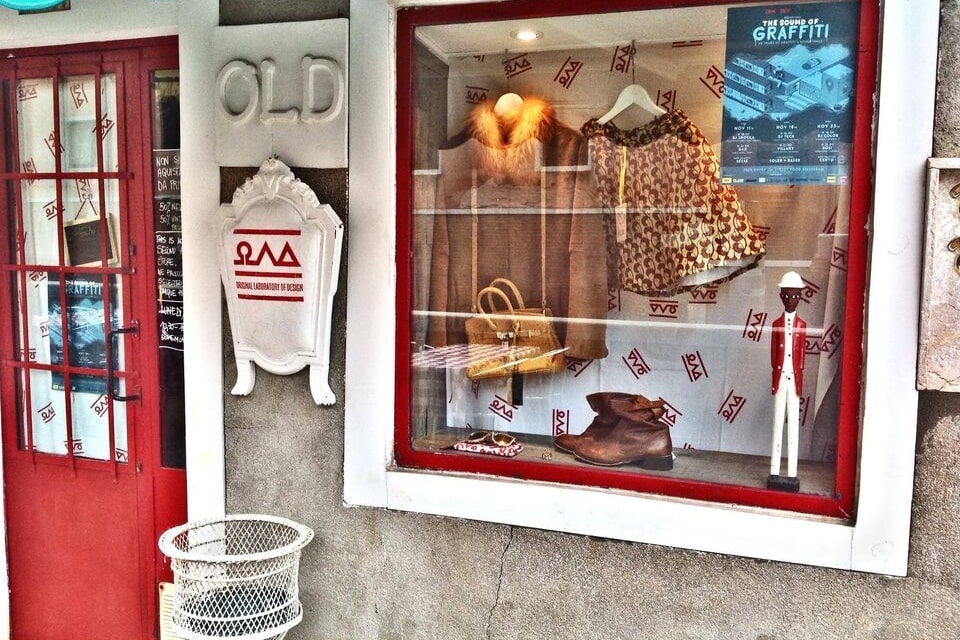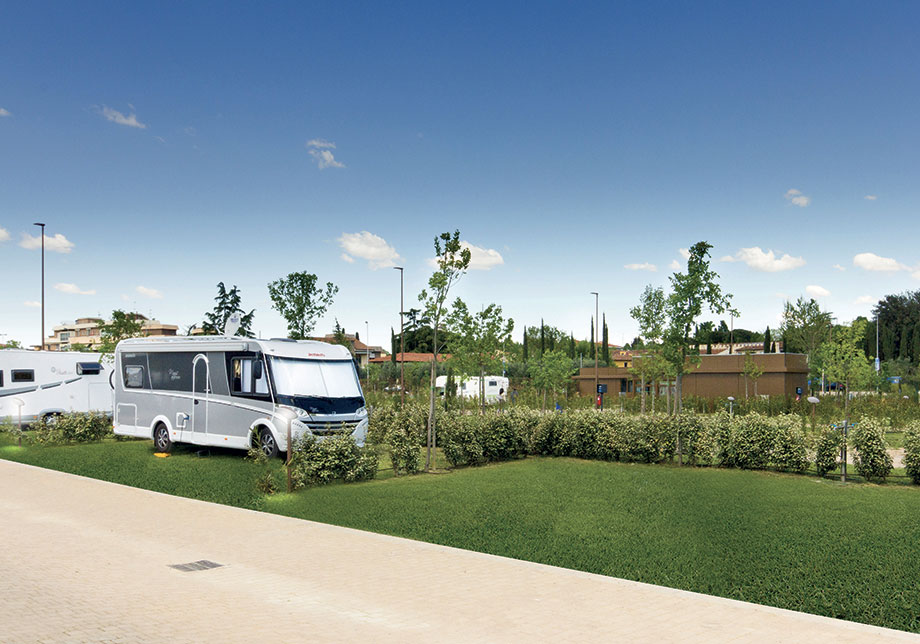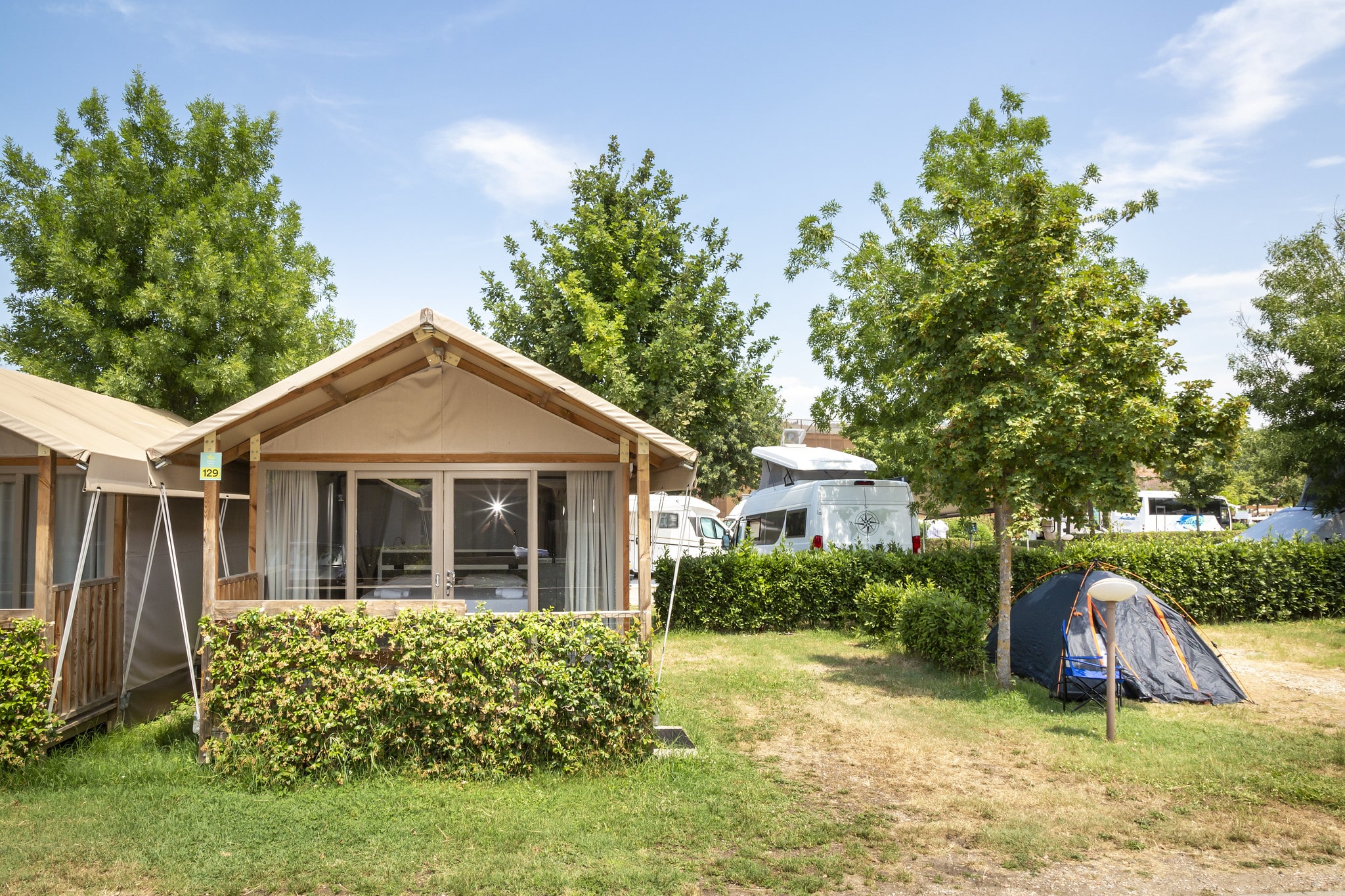In addition to the world-famous Murano, Burano and Torcello, the Venice Lagoon is home to a veritable archipelago of islands, each with its own unique history, purpose and spirit. These islands, whether large or small, inhabited or uninhabited, built-up or wild, create a surprising mosaic waiting to be discovered by the visitor willing to go off the beaten track. Autumn, with its mild climate and golden light reflecting on the lagoon, is the perfect season to explore them. For those without a boat, Venice's public transport offers the opportunity to discover some of the lagoon's most fascinating gems, conveniently accessible from the city’s piers.
North and South
Your journey begins with a choice: should you head for the north or the south lagoon? If you think of Venice as a stylised fish, the northern lagoon stretches over the animal’s ‘back’ and is interspersed with sandbanks and canals where water and land intertwine in a delicate balance. The southern lagoon, on the other hand, unfolds below the ‘belly’ of the fish, with expanses of water punctuated by islands that look like floating monasteries, shrouded in an aura of peace and spirituality.
Departing from St Mark’s Square, a short vaporetto ride south takes you to San Servolo. Start your journey here, away from the crowds, among places that tell stories of faith, science and traditions that extend into past centuries.
The “Island of Fools”
The first stop of line 20 (departure from the San Marco - San Zaccaria B pier) is San Servolo, recognisable from afar due to the twin bell towers that silhouette against the sky and frame a piazza with a suspended, almost metaphysical atmosphere. Situated between San Giorgio and Lido, this island intrigues with its Baroque church and majestic 18th century former monastery, which, until a few decades ago, housed a mental asylum that was the centre of research and reflection for Franco Basaglia.
Today, the island is the seat of the Venice International University and a lively place, animated with events, concerts and shows linked to the Venetian cultural calendar. Enjoy rarefied serenity among the gardens and cloisters, but don’t miss the main attraction, the Museum of the Asylum, dedicated to Basaglia's revolutionary studies. Just a few minutes by vaporetto, San Servolo is a must for those seeking art, history and direct contact with Venice’s past.
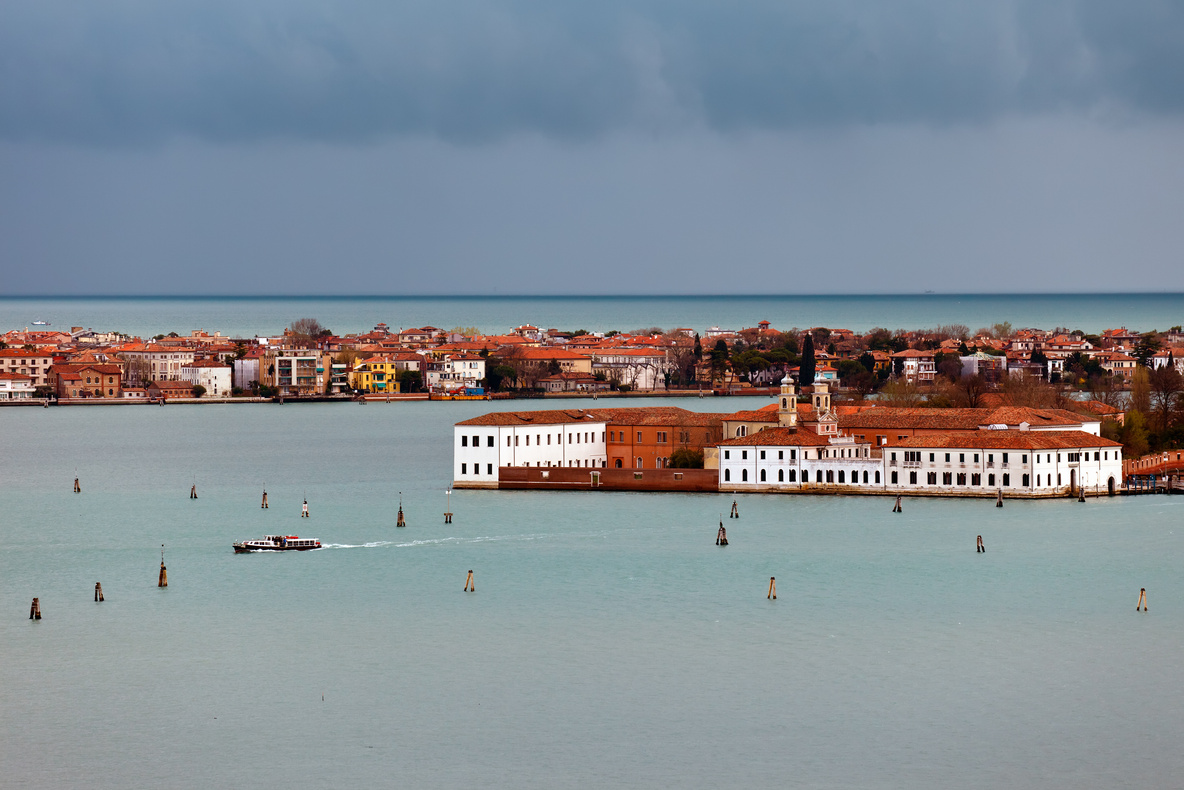
A tour of Armenia
Continue along the same line to arrive at San Lazzaro degli Armeni, a timeless place that holds priceless treasures. This tiny island is the seat of the Armenian Mekhitarist congregation and an incredible cultural and religious centre. A perfectly preserved Egyptian mummy, a plaster cast by Canova, ancient Armenian manuscripts and a library with 170,000 volumes coexist at this site. The history of San Lazzaro is closely linked to the Serenissima, which, in 1717, welcomed Abbot Mekhitar and his community who were fleeing the Turks. Thanks to the congregation, this island became a beacon for Armenian culture. Even today, Armenians from around the world look to St. Lazarus as a symbol of hope and continuity.
The island offers a unique experience of silence, hospitality and beauty. A visit will allow you to discover the secrets of its 18th-century church, lovingly tended gardens and the treasures of its library and museum. Smiling Mekhitarist fathers guide visitors and make the experience a real journey through history and spirituality. A trip to the island and the museum must be booked in advance.
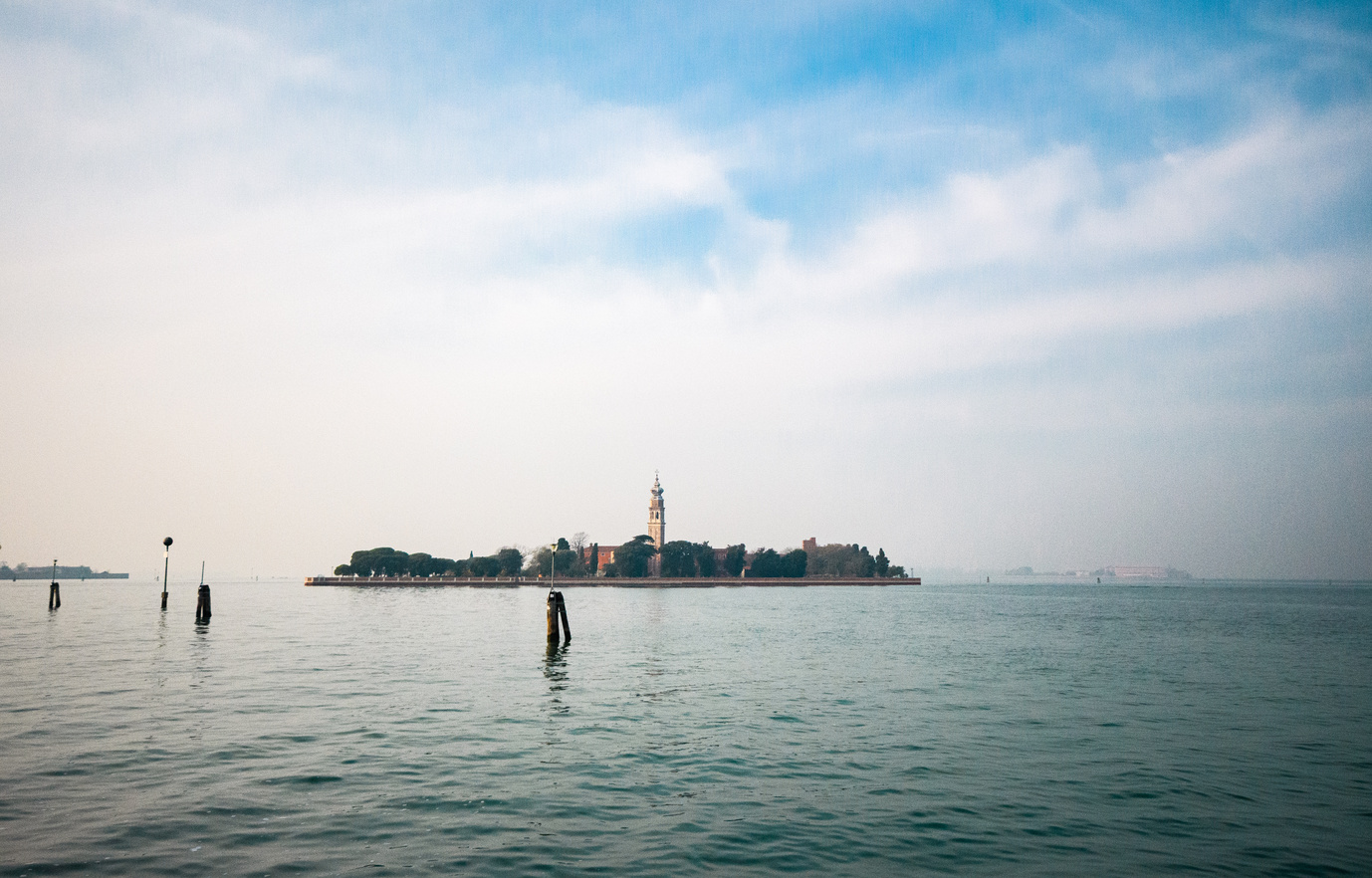
Plague and artichokes
Having explored the south, travel north to Lazzaretto Nuovo, an island rich in history and charm. Embark at the Fondamente Nove (pier D) to arrive at the Capannone pier from where you are ferried to Lazzaretto (the visit must be booked). This island tells of Venice's dark past, when in 1468 it became a lazaret where those sick with the plague were isolated. Today, it is a place of research and conservation, run by voluntary associations that organise guided tours of the Teson Grando, the former shelter for the sick, the wells and fortified structures. This picturesque island is open for exploration every weekend from April to October, visitors can enjoy its landscape of salt marshes and seagrass meadows that emerge from the water.
Crossing a small canal brings you to Sant'Erasmo, the largest of the Venetian islands. This ‘vegetable garden of Venice’ is a paradise of cultivated fields, vineyards and canals, where time is suspended like light or humidity. Visitors can buy the famous Violetto artichoke, a Slow Food presidium, directly from the farmers, or stroll up to the Torre Massimiliana, a Habsburg fortification with a spectacular view over the lagoon. If, however, you don't come across the farmers displaying their wares off the back of their Piaggio Ape, go to the I&SFarm, the organic shop in Sant'Erasmo.
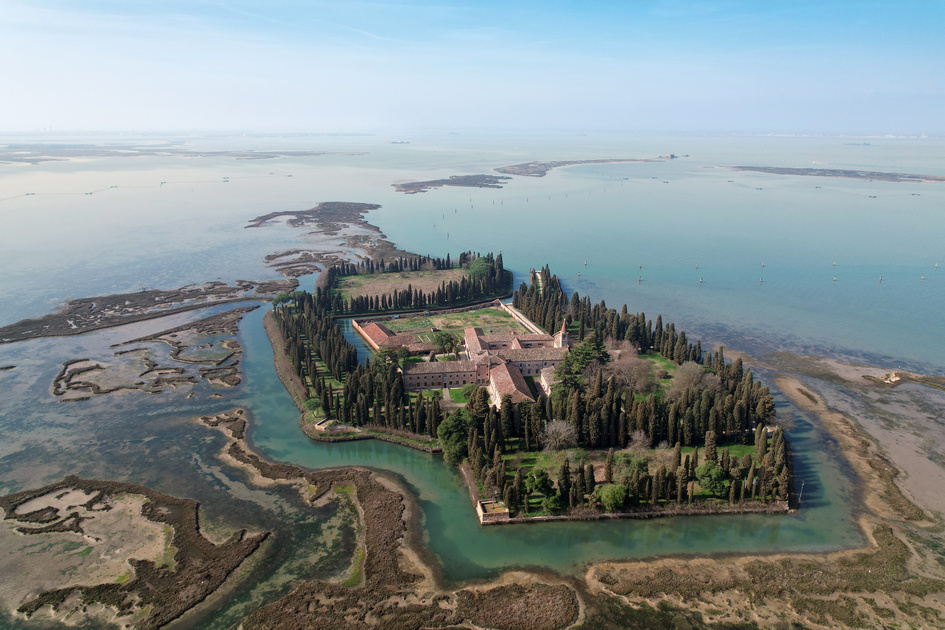
The desert in the lagoon
The last destination is San Francesco del Deserto, one of the most fascinating islands in the lagoon. To get there, leave from Burano (from Venice, embark at the Fondamente Nove A pier, where you can take a water taxi or join a tour. Surrounded by cypress trees and shallows, this small island seems to float on the water surface, it is host to an oasis of tranquillity, which, according to tradition, was founded by St Francis of Assisi on his return from the Fifth Crusade.
The island is still inhabited by a community of Franciscan friars, who welcome visitors warmly. On a trip to the Island you can explore the cloisters, church and gardens, or even stay in the guesthouse. A night at San Francesco del Deserto is an experience, immersing you in an almost unreal silence that is broken only by the faint murmur of the tide and the birdsong, and you awake surrounded by the golden light of dawn reflected on the water.
If you were unable to find a bite to eat at Sant'Erasmo, you’ll be hungry. Return to Burano, then, and dive into the best of Venetian cuisine at Da Romano, the island’s historic restaurant, or at the Osteria Al Museo, newer but also excellent. In addition, shop for essi the delicious, typical Burano biscuits from Luigi Palmisano.
